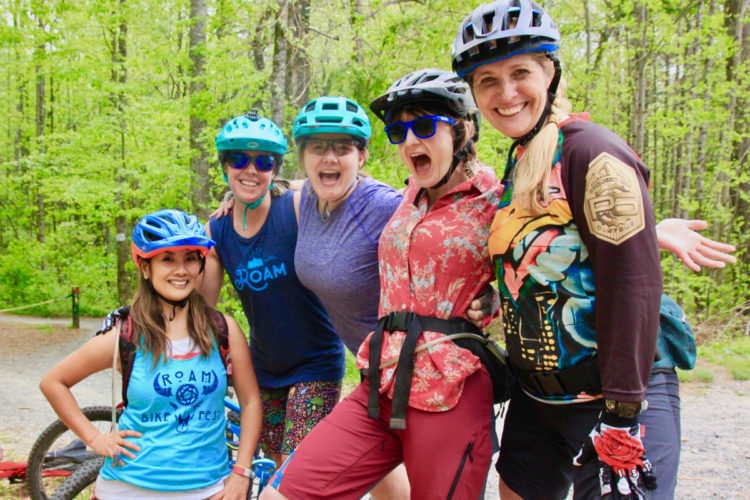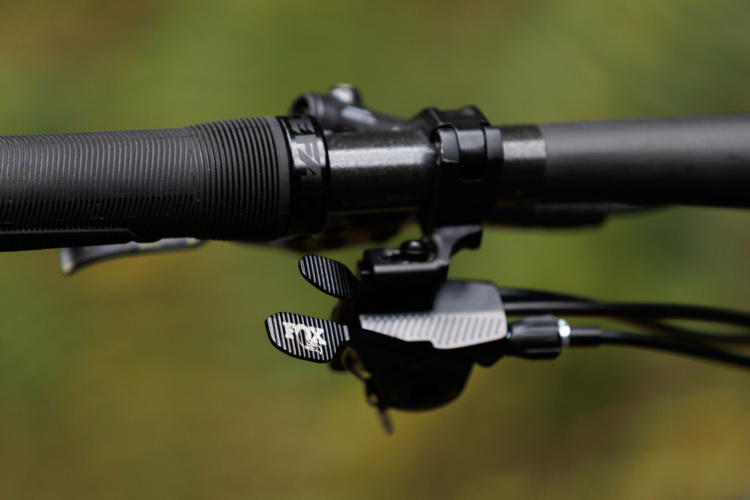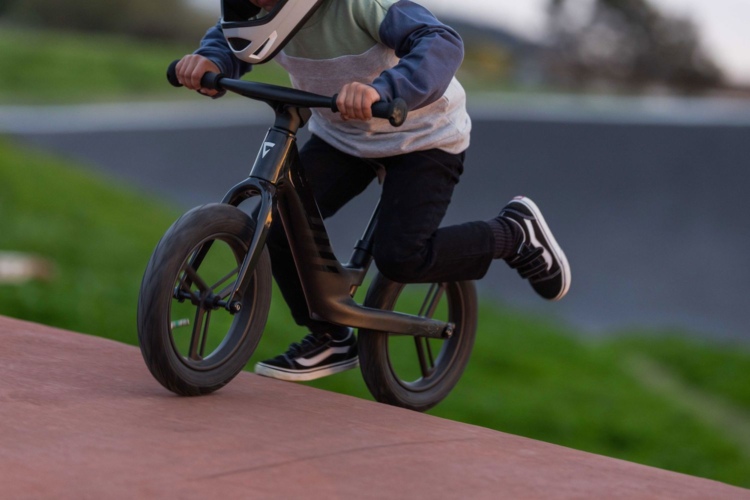
Sure, mountain biking is full of diversity: we have guys who shave their legs and race lightweight XC bikes, bros who shred DH bikes in full face helmets, and men with beards who ride fat bikes in the snow. But wait a minute–these are all men! And if you’re like me, you probably also imagined each of these guys to be Caucasian too.
Not that you’d be incorrect to assume that mountain bikers are mostly white men. If we picked 10 random North American mountain bikers out of a hat, 8 of them would be men. And every one of them would be white.
Now before you jump right to the comments, let me be clear: I’m not out to advocate anything with regards to diversity or demographics within our sport. I am, however, interested in understanding where we are right now and where we might be heading in the future. With that in mind, here are some stats about mountain bikers’ ethnicity, gender, age, and household income. Note that this data applies mainly to mountain bikers within the US and Canada, and any survey data I reference applies to Singletracks.com readers only. (About 1 million mountain bikers visit Singletracks each month, so I’m using our readership as a decent representation of mountain bikers as a whole.)
Gender

The first few times people asked me what percentage of Singletracks viewers were female, I was honestly embarrassed to tell them it was only about 15%. But I quickly realized that this isn’t unusual for a mountain bike publication; in fact, some people congratulated us for having such a high number!
Looking at our latest survey data, only about 5% of the responses came from females. Google Analytics tells us that about 13% of our readers are female, while Quantcast, another third party source, estimates 18% of Singletracks readers are female. Now some might claim these stats are biased because there are more men on the internet than women, but the fact is that today women actually outnumber men online in North America, representing 52% of all online users.
So, if I’m being generous, my guess is that at most, 2 out of 10 mountain bikers are women. It’s actually difficult to find another activity that has such lopsided gender participation numbers.
Ethnicity

According to our latest survey, more than 90% of Singletracks readers are Caucasian. I started to build a pie chart to show the breakdown but realized it would be impossible to label anything other than the Caucasian slice!
Our survey shows about 4% of our readers are Hispanic, 3% are Asian, and 1% are African American. Truthfully, all of these numbers are rounded up so they’re not even as as “big” as they appear. Quantcast data paints a similar, though slightly more diverse picture: 6% Hispanic, 4% Asian, and 3% African American.
Most of us, outside of a few diverse locations, can probably vouch for these numbers by taking a look around at the riders at the local trailhead on a Saturday morning. Compared to the US population at large, where 2010 Census Data shows 16% of citizens are Hispanic and 13% are African American, we see just how unusually white mountain biking is.
In researching this article I came across a report from People For Bikes, which summarized some of their findings around biking and ethnicity. I won’t go into detail here so if you’re interested in learning more, definitely follow the link above. But here are some of their key takeaways:
- People of color are most likely to want to bike more than they currently do.
- Hispanic people ride for recreation the most.
- The lowest income households bike for recreation the most. [Note: this applies only to income, not ethnicity.]
So it seems the tides may be changing, though there is still a long way to go.
Age
Mountain biking is an active, physical sport, so one might assume mountain bikers are, on average, a younger group of folks. It turns out this is partially correct: 3% of Singletracks readers are over the age of 65 compared to 12%+ of the US population. But at the other end of the spectrum, 26% of the US population is under the age of 18, compared to only 12% of Singletracks readers. (Of course many people under the age of 18 are toddlers, so we’ll cut them some slack.)
The bulk of Singletracks readers (and by rough extension, mountain bikers) are aged 24-44: 49% compared to just 30.2% of the US population at large. But even folks aged 45-64 are over-represented among mountain bikers: 26% compared to just 22% of the US population.
Judging by the success and promotion of high school mountain bike leagues, apparently we aren’t the first to notice a “bulge” in mountain biker demographics at the middle age mark. Could senior citizen MTB leagues be just around the corner? eMTB manufacturers certainly seem to think so.
Income

The People for Bikes study referenced above found that the lowest income households (those earning less than $20K a year) biked the most for recreation (chart above, left side). However, for those earning more than $20K a year, biking for recreation increases steadily as income increases.
Looking at Singletracks reader demographics, we find households earning $50K or less each year are under-represented compared to the US population at large based on Census data, while those earning more than $100K a year are over-represented.
On the one hand, it’s not surprising that mountain biking attracts more high income households given the cost of getting into the sport. On the other hand, ultra-low income households have few recreation options available, which makes the nearly-zero incremental cost of biking appealing. That is, biking is basically free once you have a bike. Non-profit organizations like Trips for Kids (TFK) seem to recognize this, giving low income, ethnically-diverse, young riders exposure to mountain biking through their programs. TFK for the trifecta!
Summary
Remember at the beginning of the article when I said I wasn’t advocating anything? I’ll stick to my promise here, but I will say this: there are tremendous benefits to diversity. Heck, a Google search for “benefits of diversity” returns 209 million results, including articles about how it’s good for business, communities, and society at large.
Mountain biking is a tremendously positive activity–it’s healthy, fun, and often awe-inspiring–and I can honestly say I love being a part of the community of riders around the world. Now, I wonder what the sport would be like if mountain bikers were just as diverse as the world around us?





















15 Comments
Sep 21, 2016
Sep 21, 2018
Sep 26, 2016
Sep 26, 2016
Sep 21, 2018
Sep 21, 2018
The article touches on the number of female readers on the site. I don't think that equates to who's actually riding. I think women are more action than talk when it comes to mountain biking, spending less time on online in forums, etc.. Just my impression.
Sep 20, 2016
Ethnicity
Most of the riders are caucasian males, the female representation is minimal and caucasian.
Hispanics, asian and african american are almost non existent.
Age
Most age groups are represented but the majority falls in the 22-44 group.
Income
Have no idea and don't care but if you use the bike and gear as a metric most have a good source of income.
Sep 20, 2016
Sep 21, 2018
Sep 20, 2016
Where does this sort of an analysis end? Why does everything in life now have to be analysed through the prism of "diversity"?
Can't we just have mountain biking because we love mountain biking? Your social characteristics have nothing to do with your enthusiasm for the sport, yet this line of analysis suggests precisely that.
And when you find a lack of "diversity" it suggests a problem, that it isn't "representative", systemically discriminative or that some sort of social inequity must exist that needs to be righted by attacking unconscious bias, privilege or some other sanctimonious bullshit.
And of course this analysis faces the same flaws as everywhere else, correlation isn't causation. It suggests that singular social characteristics explain the state of affairs, it is shallow and avoids looking any deeper. It starts and ends with the premise that social characteristics are the explaining variable.
"People of colour are most likely to want to bike more". I mean honestly...
Maybe it's just that Singletracks.com is an English language primarily American website?
I just like riding mountain bikes. It appealed to me because it looked like a really fun way to experience the outdoors. Turns out it was.
Sep 21, 2018
Sep 20, 2016
Also, the data I reference isn't just based on Singletracks survey data. In fact, the stat about people of color wanting to ride more that you quoted was taken from a People for Bikes survey.
Sep 20, 2016
Sep 20, 2016
For the record, my wife rides too. And she reads MTB websites ????
Sep 21, 2018